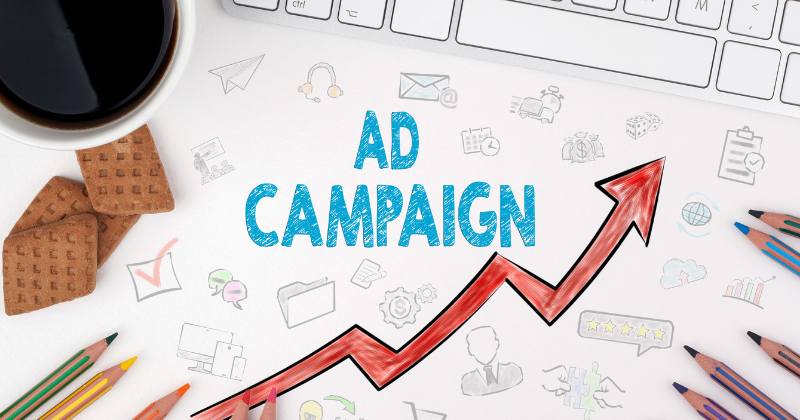Written by
How to Create a Successful Facebook Campaign That Drives Results
POST
Estimated Read Time
9 min read
With billions of active users, the Meta ecosystem (Facebook and Instagram) remains one of the most powerful social media advertising platforms available to businesses. However, simply boosting a post and hoping for the best is a direct path to a wasted budget. A truly successful Facebook campaign is a machine with many moving parts—a blend of art and science.
Understanding the right Facebook Ads strategy can be the difference between burning cash and generating a predictable stream of leads and sales. Many businesses feel overwhelmed by the complexity of the Ads Manager, from audience selection to budget optimization.
This in-depth guide will walk you through the essential steps of a proper Facebook campaign setup. We’ll cover everything from defining your goals to analyzing your data, providing actionable Facebook marketing tips to help you build a campaign that delivers a real return on investment (ROI).
What Makes a Facebook Campaign Successful?
Before you spend a single dollar, you must define what “success” looks like. A successful Facebook campaign is not one that gets the most “likes.” It’s one that achieves a specific, measurable business objective.
Success is a metric, and it’s directly tied to your goals. Here’s what success might look like for different objectives:
- For an E-commerce Store: A high Return on Ad Spend (ROAS). For every $1 spent, you might aim to get $4 back in sales.
- For a B2B Service: A low Cost Per Lead (CPL). You might aim to acquire qualified email leads for under $10 each.
- For a New Brand: A low Cost Per Mille (CPM) and high reach, focused on building brand awareness in a new market.
Your entire Facebook Ads strategy will be built around achieving the specific metric you define here.
1. Identify and Define Your Target Audience
This is the most critical step in your Facebook campaign setup. You can have the best ad in the world, but if you show it to the wrong people, it will fail. Facebook’s targeting capabilities are its greatest strength.
Actionable Steps:
- Analyze Your Existing Customers: Start with what you know. Look at your best customers. What are their demographics (age, gender, location), interests, and online behaviors?
- Create Customer Personas: Build 2-3 detailed “personas” of your ideal customer. Give them a name, a job, and a list of interests. This makes them easier to target.
- Use Facebook’s Audience Types:
-
- Core Audiences: This is where you manually build an audience based on demographics, locations, interests (e.g., “Interested in hiking”), and behaviors (e.g., “Recent international travelers”).
- Custom Audiences: These are “warm” audiences of people who already know you. You can create them from your email list, website visitors (via the Meta Pixel), or people who have engaged with your Facebook/Instagram page.
- Lookalike Audiences: This is where Facebook’s AI shines. You can give Facebook a Custom Audience (e.g., your “best customers” email list), and it will find millions of new people who share similar characteristics.
Pro-Tip: Start with your warmest audiences first (Custom Audiences). Retargeting website visitors who didn’t buy is often the most profitable campaign you can run.
2. Set Clear Goals and Objectives
When you create a new campaign in Facebook Ads Manager, the very first thing it asks you to do is choose an objective. This choice tells Facebook’s algorithm what to optimize for.
- Awareness: Show your ads to the maximum number of people. (Goal: Reach, Brand Awareness)
- Traffic: Send people to a destination, like your website or blog. (Goal: Clicks)
- Engagement: Get more post engagements, Page likes, or event responses. (Goal: Likes, Comments, Shares)
- Leads: Collect information from people interested in your business, often via an on-Facebook Lead Form. (Goal: Leads)
- App Promotion: Find new people to install and use your app. (Goal: App Installs)
- Sales: Find people likely to purchase your product or service. (Goal: Conversions, Sales)
Common Mistake: Choosing “Traffic” when you really want “Sales.” If you choose Traffic, Facebook will find people who love to click links, not necessarily people who love to buy things. If you want sales, you must choose the “Sales” objective and have your Meta Pixel set up to track purchases.
3. Create Engaging Ad Creatives and Copy
Your ad creative (the image or video) is what stops the scroll. Your ad copy (the text) is what persuades them to act.
For Ad Creatives (Visuals):
- Video is King: Video, especially short-form vertical video for Reels and Stories, consistently outperforms static images.
- Use High-Quality, Authentic Imagery: Avoid overly staged stock photos. User-generated content (UGC) or authentic, behind-the-scenes-style photos build trust.
- Test Carousel Ads: Perfect for e-commerce, allowing you to showcase multiple products or features in a single ad.
For Ad Copy (Text):
- The Hook (First Line): The first 1-2 lines are all that most people will see. Start with a question, a bold statement, or a clear solution to their problem.
- Focus on Benefits, Not Features:
-
- Feature: “Our new boots have waterproof lining.”
- Benefit: “Keep your feet warm and dry on any adventure.”
- Include a Clear Call-to-Action (CTA): Don’t be shy. Tell the user exactly what to do next: “Shop Now,” “Learn More,” “Download Your Free Guide,” or “Book Your Call.”
One of the best Facebook marketing tips is to A/B test your creatives. Create one campaign but test 2-3 different images or videos and 2-3 different versions of ad copy to see what combination performs best.
4. Choose the Right Ad Format and Placement
Where will your ad appear? Facebook’s “placements” include the Facebook Feed, Instagram Feed, Instagram Reels, Stories, Messenger, and more.
- Advantage+ Placements (Recommended): This is Facebook’s automatic placement option. By selecting this, you allow Facebook to test all its available placements and automatically allocate more of your budget to the ones that are delivering the best results for your objective.
- Manual Placements: You can use this if you want to only run ads in a specific place (e.g., “Instagram Stories only”). This is for advanced users who have data showing one placement is far superior for their goal.
For ad formats, match them to your goal. A “Collection” ad is excellent for a mobile shopping experience, while a simple “Image” ad might be perfect for a lead generation campaign.
5. Set Your Budget and Bidding Strategy
This is where many beginners get nervous. Here’s a simple breakdown of your two main choices for budget:
- Advantage Campaign Budget (formerly CBO): You set one central budget at the campaign level. Facebook then automatically distributes that budget across your different ad sets (audiences) to get the best results. This is highly recommended for most advertisers.
- Ad Set Budget: You manually set a separate budget for each individual ad set. This gives you more control but requires more hands-on management.
For your bidding strategy, “Highest Volume” is the default. This tells Facebook to get you the most results possible for your budget. More advanced options like “Cost Per Result Goal” allow you to set a cap on what you’re willing to pay, but this can limit your ad delivery if your cap is set too low.
6. Track Performance and Optimize Your Ads
Launching a successful Facebook campaign is not a “set it and forget it” activity. The real work begins after your ads go live.
- Install the Meta Pixel and Conversions API (CAPI): This is non-negotiable. The Pixel is a piece of code on your website that tracks user actions (like “Add to Cart” or “Purchase”). CAPI works with it to create a more reliable connection that isn’t as affected by browser blockers or iOS updates.
- Let Your Ads “Learn”: When an ad is new, it’s in the “Learning Phase.” Facebook is testing it on different people to see who responds. Avoid making major changes during this time (usually 3-5 days or after ~50 conversions).
- Key Metrics to Watch:
-
- CPA (Cost Per Acquisition) / Cost Per Result: This is your most important metric. Is it at or below your target?
- CTR (Click-Through Rate): A low CTR (under 1%) often means your creative isn’t engaging or your audience is wrong.
- Frequency: This shows how many times, on average, one person has seen your ad. If it gets too high (e.g., over 5-7), your audience may be experiencing “ad fatigue,” and it’s time to swap in new creatives.
Optimization Actions:
- Kill: Turn off ads or ad sets that have a high CPA.
- Scale: Slowly increase the budget (15-20% every few days) on the ad sets that are performing well.
- Test: Duplicate your best ad sets and test one new variable, like a new audience or a new ad creative.
Common Mistakes to Avoid in Facebook Campaigns
A poor Facebook Ads strategy is often defined by these common pitfalls:
- Audience is Too Broad: Targeting “Everyone in the United States” is a fast way to waste money.
- No Meta Pixel: Flying blind without tracking conversions.
- Ad Fatigue: Running the same ad for months until it stops working.
- No Testing: Only running one ad and one audience and assuming it’s the best you can do.
- Wrong Objective: Optimizing for clicks when you want sales.
- Ignoring Mobile: Your ad and landing page must look and work flawlessly on a mobile device, as this is where most users will see it.
Conclusion: Test, Learn, and Optimize
Creating a successful Facebook campaign is a continuous loop of strategy, testing, and optimization. It’s not about finding one “perfect ad” but about building a system.
Start by defining your goals and understanding your audience. Create compelling ads that speak directly to their needs. Set up your Facebook campaign setup to track everything with the Meta Pixel. Finally, dedicate time each week to analyze your results and make data-driven decisions.
By avoiding common mistakes and applying these fundamental Facebook marketing tips, you can move from guesswork to building a predictable and profitable social media advertising engine for your business.
Also Read: Avoiding Social Strategy Failure: 3 Critical Mistakes You’re Probably Making
Tags:




